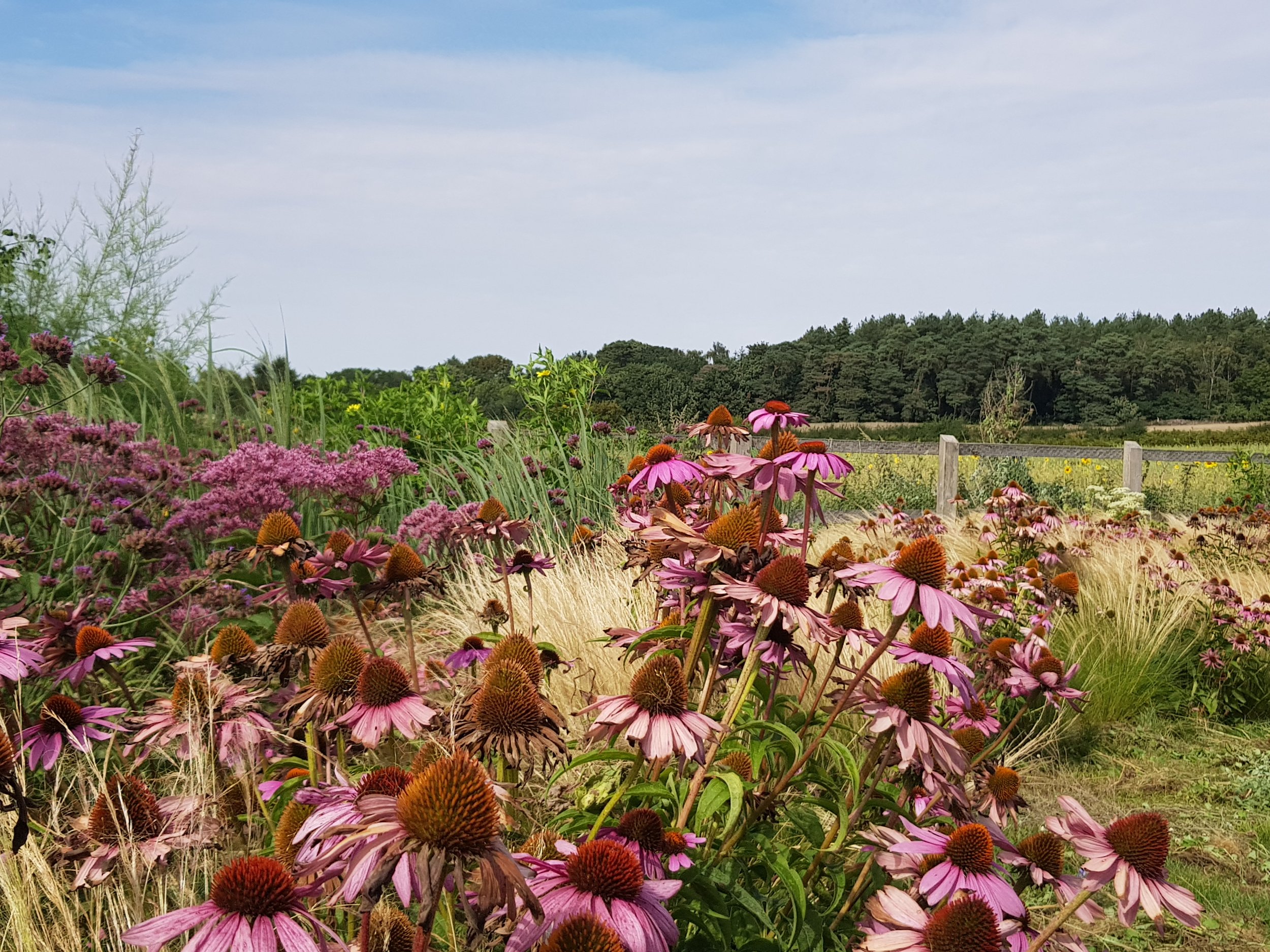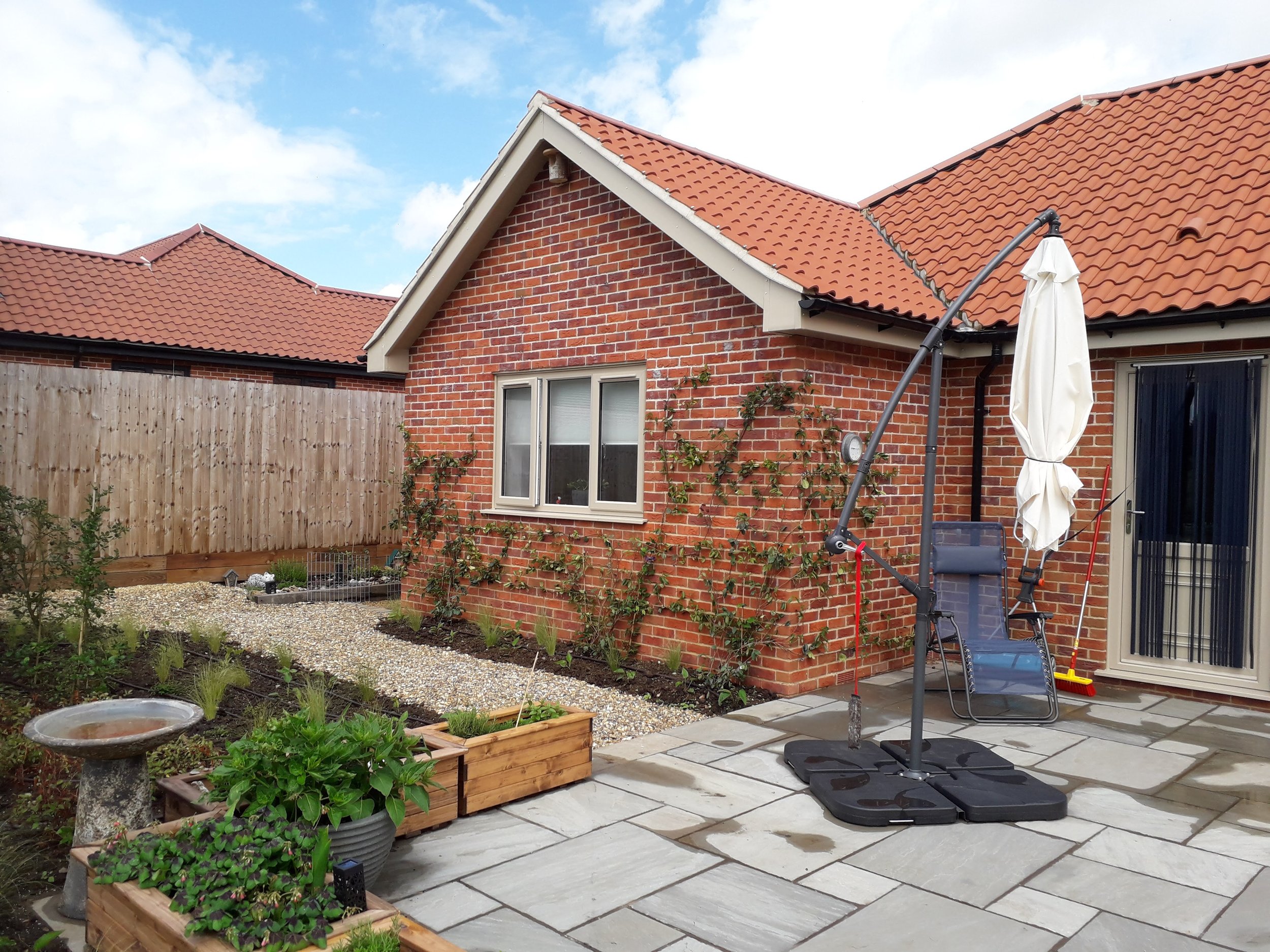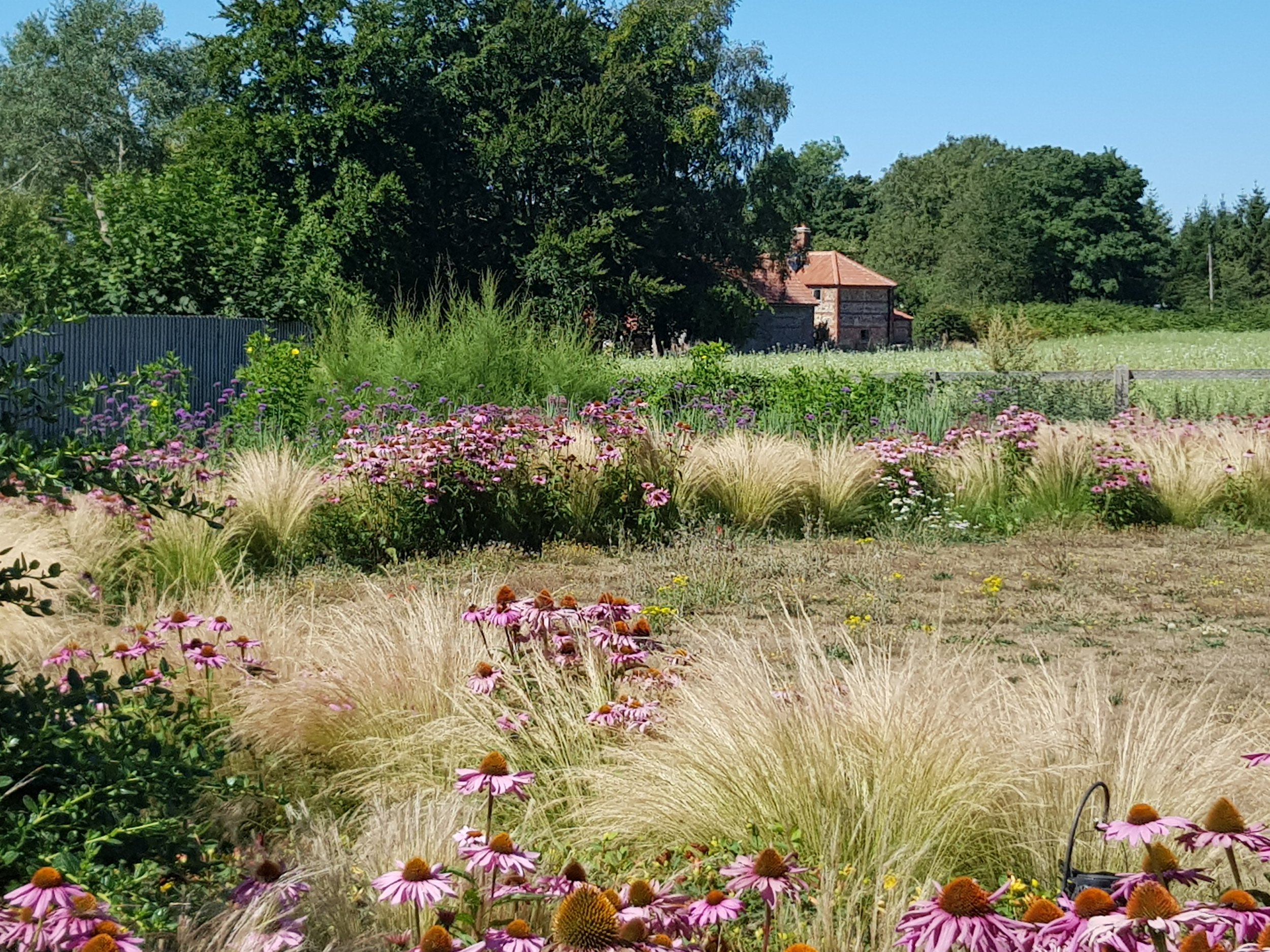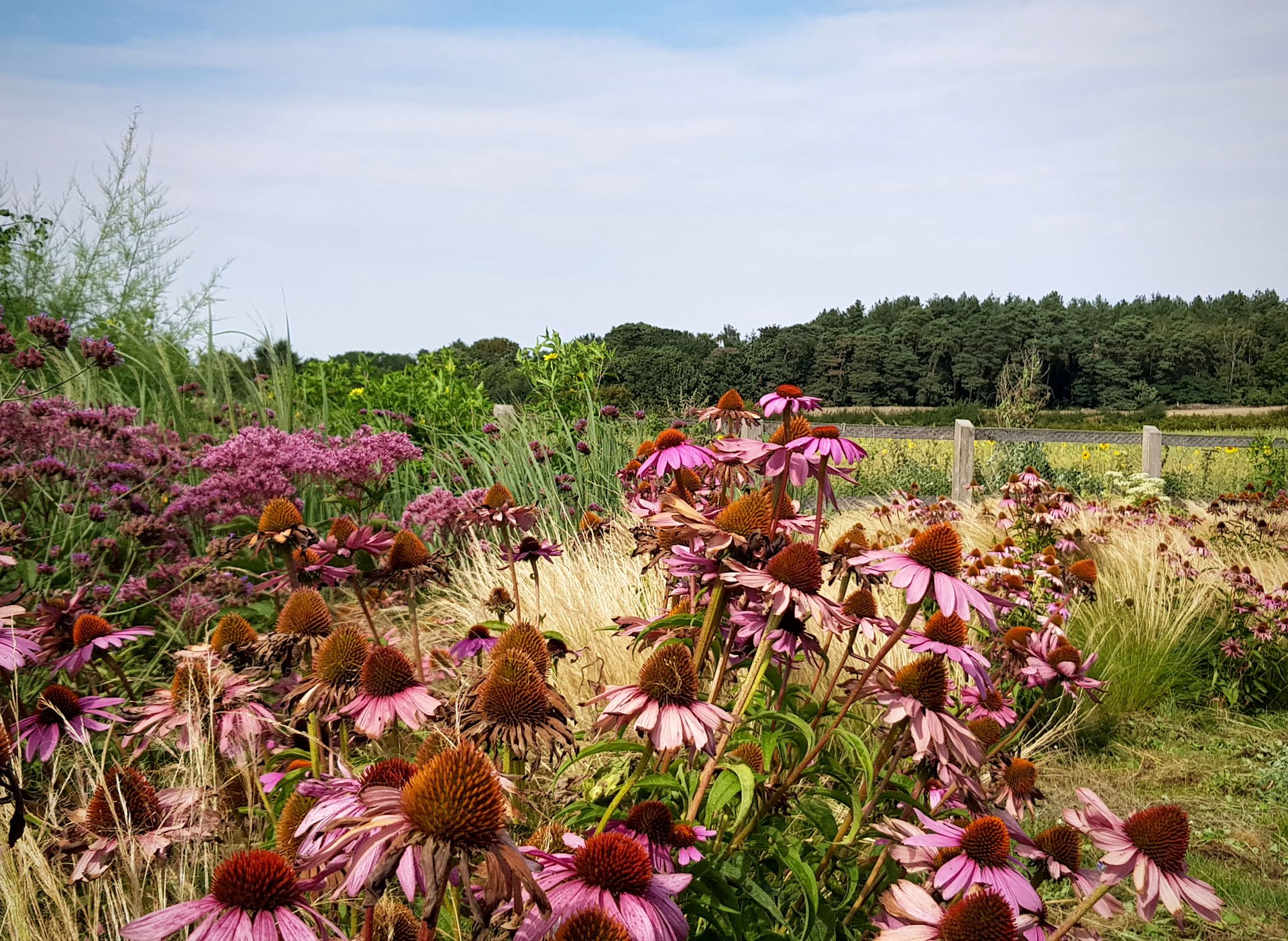
Countryside garden in Norfolk
Countryside garden in Norfolk
The 600 square meters of a new built bungalow in the heart of the Brekland recently completed. A big faux flag stone patio, taking half of the front of the building, linked the house to the garden stretching out on to the lawn. The garden is in a small village, divided from the main road by another property and facing a field left at fallow.
The brief
The garden was just a stretch of grass, a flat, empty void closed on the two sides by standard 6-foot feather edge fences, with a post and rails fence at the bottom opening on the uncultivated field where wildflowers had naturally started growing interspersed with cereals from the previous years’ cultivations. The sandy soil had been mineralised by repeated wrong agricultural practices and compacted very hard by the running of the builders’ plants.
Of the 600 square meters, 400 were left at lawn and the remaining 200 were turned in a single flower bed, arching from one side of the patio along all the boundaries to the opposite side of the patio to connect the all garden together with the house. We left only one gap, disguised by the vegetation of the flower bed to anyone not standing in front of it, for a mown path leading from the back to the front garden.
We opted for a very simple planting, repeating itself on the two sides of the garden, dominated by grasses (Stipa tenuissima on the two sides and Panicum virgatum ‘North Wind’ for the bottom section facing the building) and Echinacea. The four corners of the garden were planted with tall shrubs and trees: Ceanothus thyrsiflorum at the sides of the patio for a spring blooming, Tamarix gallica in front of Laburnum anagyroides at the opposite corners to frame the meadow beyond.
The soil was improved with the addition of bio-char, which provides a permanent improvement to the structure helping water and nutrients retainment, and fresh horse manure, which imported a lot of weeds we had to deal with but also many micro-organisms, like worms and beetles. The result was unexpected: in just six months we achieved the growth of more than one full year. The improvement made to the soil triggered a trophic cascade, with organic matter and micro-organisms creating the right conditions for a quick growth of the new garden, which in returned provided organic matter to the soil, shelter and food to wildlife.
View other Case Studies
New-build in Cambridge
A terraced new-built family house in a central area of Cambridge with a small, square garden enclosed by the house and the garage, visible through the broad glass wall and only access to the garage via a concrete slabs path running in front of the house and along a fence.
Terraced house in Cambridge
A terraced house in a busy area of Cambridge with a small back garden of only 30 square meters sank to the basement level and shaded by the house and a very tall brick wall dividing the garden from the next-door garden. The only access to the garden was through the house and then the basement.









